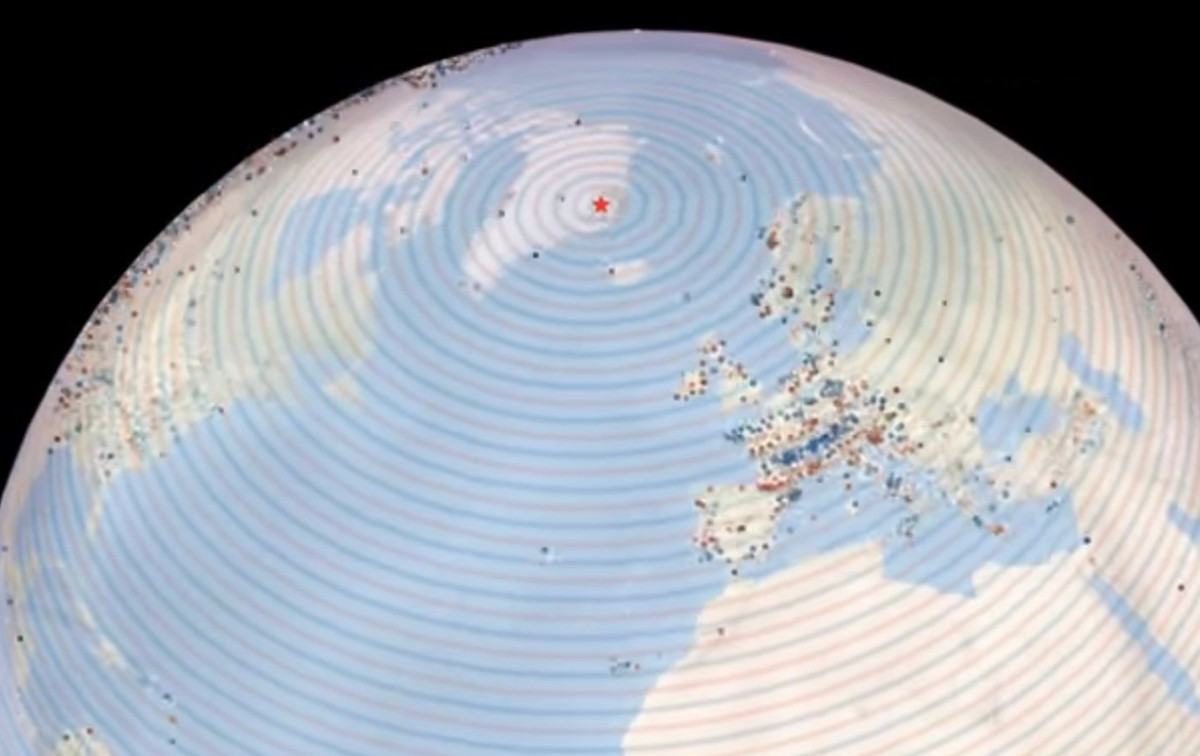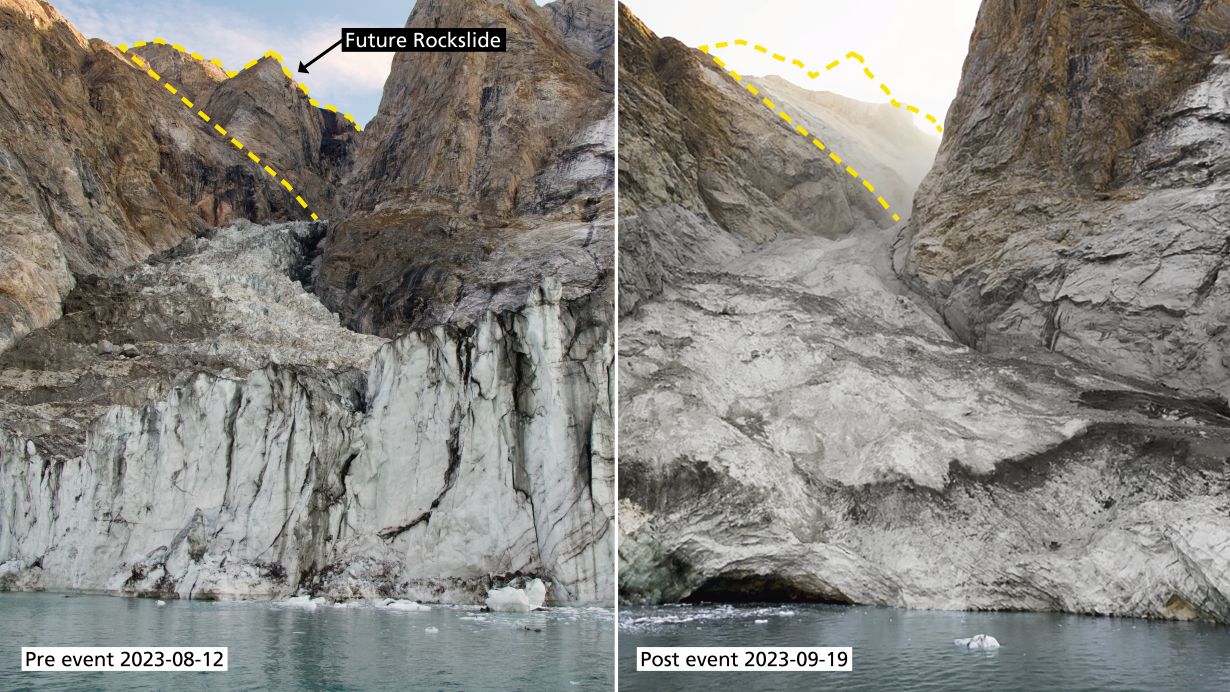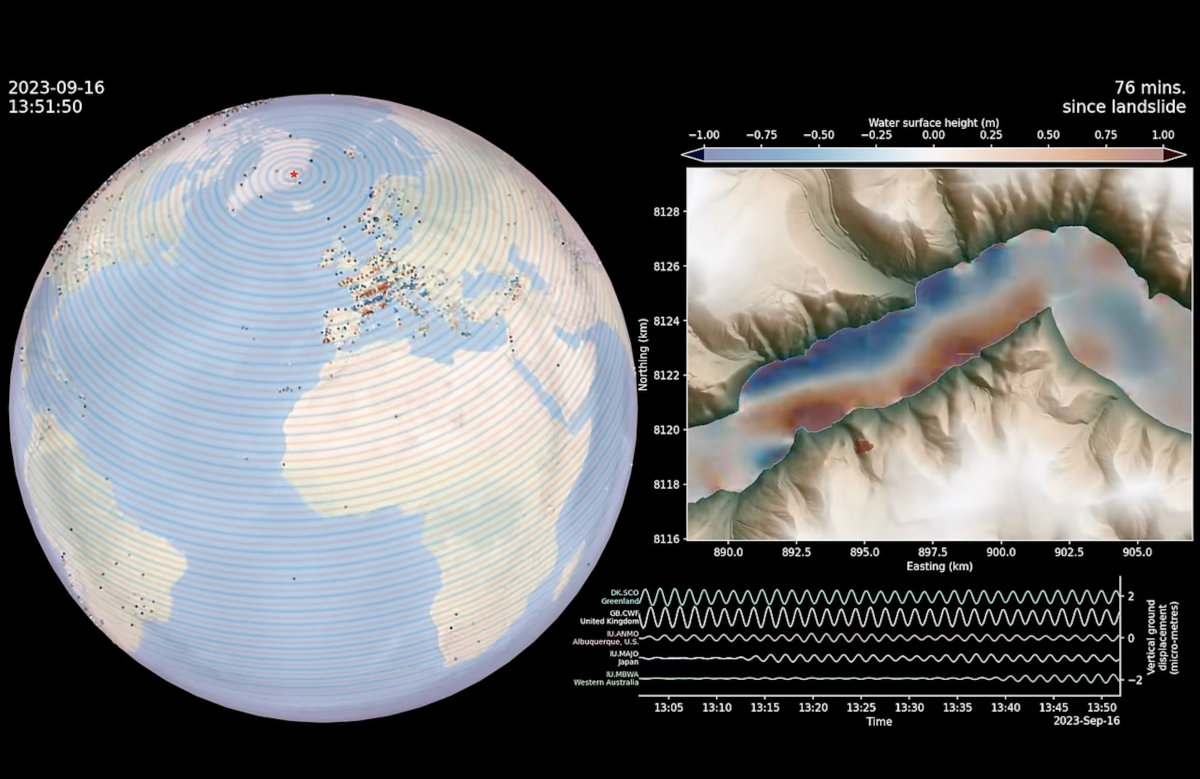Dickson Fjord, Greenland —(Map)
Last September, scientists around the world were puzzled by an unusual rumbling traveling through the Earth. It was a strong signal, but it wasn’t an earthquake. No one knew what it was. Now, a year later, scientists have solved the mystery. A landslide triggered a massive tsunami, which became a powerful bouncing wave.
Geologists around the world noticed something strange on their seismographs starting last September 16. Seismographs measure vibrations coming through the Earth’s crust. Normally, when an earthquake happens, seismographs show a busy pattern of lines.
But this signal was different from that of an earthquake. It was a slow vibration, similar to a hum. It reached a high point every 92 seconds – much slower than an earthquake. The strange signal lasted for nine days, then slowly went away.

(Source: Screenshot, video by Stephen Hicks, UCL.)
Scientists were confused. They had no idea what was causing the signal. “No one had ever seen this,” said Kristian Svennevig, a geologist from Denmark. Scientists began calling the signal an “Unidentified Seismic Object”, or USO.
But teams of scientists began studying the mystery. Roughly 70 scientists from 15 countries around the world began to exchange ideas and information.
One strong clue was that seismographs showed a landslide crashing into Dickson Fjord on the east side of Greenland. A fjord is a long, thin channel of deep water surrounded by tall cliffs.
A massive piece of rock – about five football fields long, and just as wide – fell off a mountain in eastern Greenland. The glacier that had been supporting the rock was melting because of climate change.

(Sources: Søren Rysgaard (left), Danish Army (right) / Collage: Elias Kobel, KIT)
When the glacier gave way, all the rock and ice went smashing down into Dickson Fjord. The result was a gigantic tsunami, 650 feet (200 meters) high. Luckily, no one was killed because no boats were in the fjord at the time.
The tsunami also showed up on seismographs, but it didn’t explain the unusual signal, which had continued.
But the scientists knew they were on to something. They began to use computers to test ideas about what might happen when such a huge tsunami occurs in a long, thin body of water like Dickson Fjord.
They began to wonder about a special kind of bouncing wave, called a seiche (pronounced “say-sh”). A seiche is a special wave that bounces back and forth across an enclosed area, like a bathtub or a swimming pool.

(Source: Screenshot, video by Stephen Hicks, UCL.)
Once the scientists got more detailed information about the shape of the sea floor in the fjord, they were able to improve their computer model. Sure enough, the model showed that the landslide and resulting tsunami would create a massive seiche.
The model matched what actually happened – a huge wave slapping back and forth in the fjord for nine days. The wave had enough force for the vibrations to reach seismographs around the world until they slowly died out.
As unusual as this event was, scientists say we may see more like it in the future. The landslide that started it all was triggered by climate change. As temperatures rise and glaciers melt, some mountains will become less stable, making such landslides more likely.
😕
This map has not been loaded because of your cookie choices. To view the content, you can accept 'Non-necessary' cookies.
